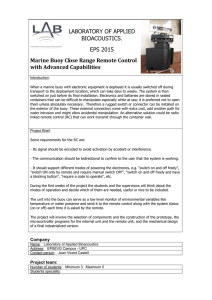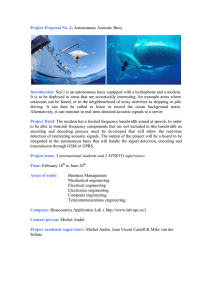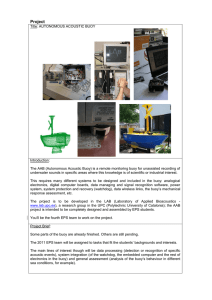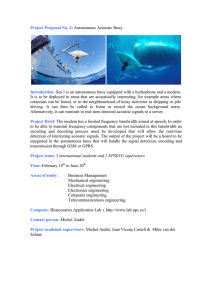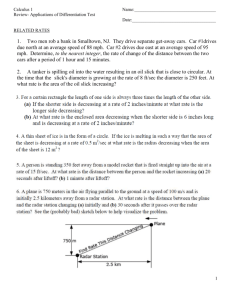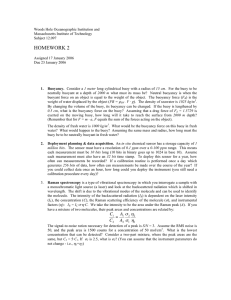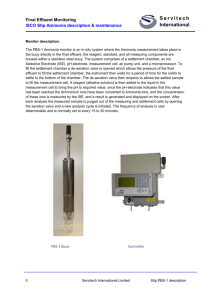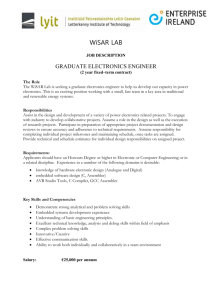LABORATORY OF APPLIED BIOACOUSTICS. EPS 2016 Close Range Remote Control with
advertisement
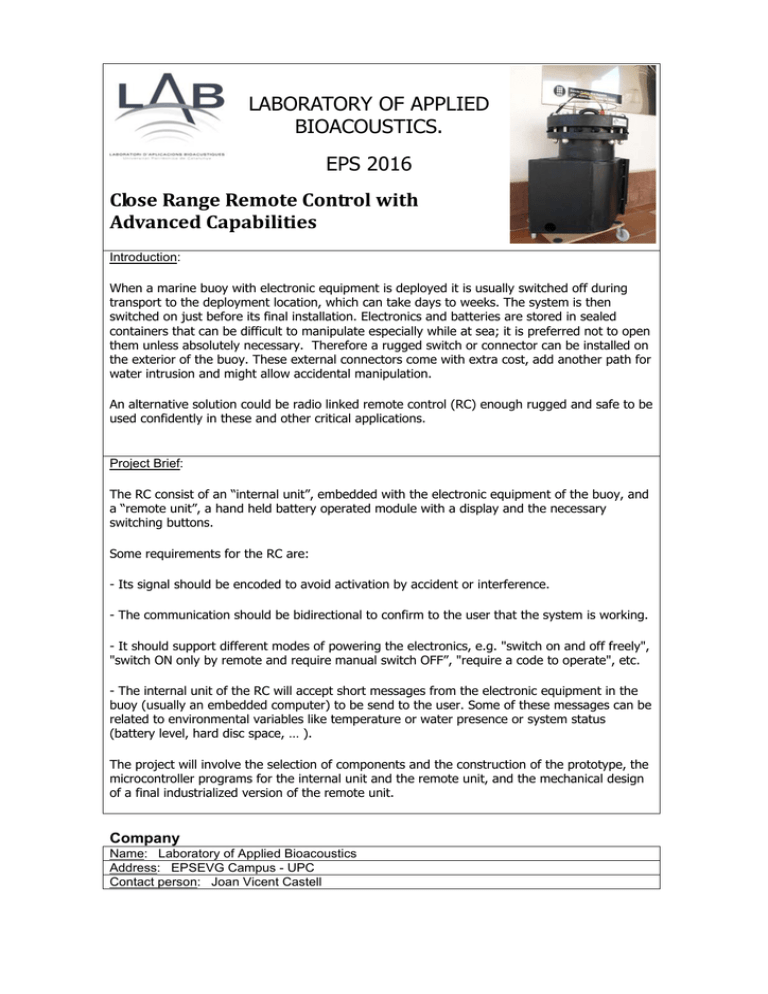
LABORATORY OF APPLIED BIOACOUSTICS. EPS 2016 CloseRangeRemoteControlwith AdvancedCapabilities Introduction: When a marine buoy with electronic equipment is deployed it is usually switched off during transport to the deployment location, which can take days to weeks. The system is then switched on just before its final installation. Electronics and batteries are stored in sealed containers that can be difficult to manipulate especially while at sea; it is preferred not to open them unless absolutely necessary. Therefore a rugged switch or connector can be installed on the exterior of the buoy. These external connectors come with extra cost, add another path for water intrusion and might allow accidental manipulation. An alternative solution could be radio linked remote control (RC) enough rugged and safe to be used confidently in these and other critical applications. Project Brief: The RC consist of an “internal unit”, embedded with the electronic equipment of the buoy, and a “remote unit”, a hand held battery operated module with a display and the necessary switching buttons. Some requirements for the RC are: - Its signal should be encoded to avoid activation by accident or interference. - The communication should be bidirectional to confirm to the user that the system is working. - It should support different modes of powering the electronics, e.g. "switch on and off freely", "switch ON only by remote and require manual switch OFF”, "require a code to operate", etc. - The internal unit of the RC will accept short messages from the electronic equipment in the buoy (usually an embedded computer) to be send to the user. Some of these messages can be related to environmental variables like temperature or water presence or system status (battery level, hard disc space, … ). The project will involve the selection of components and the construction of the prototype, the microcontroller programs for the internal unit and the remote unit, and the mechanical design of a final industrialized version of the remote unit. Company Name: Laboratory of Applied Bioacoustics Address: EPSEVG Campus - UPC Contact person: Joan Vicent Castell Project team: Number of students: Minimum 2. Maximum 4 Students speciality: The ideal team should include at least a mechanical or design engineering student, an electronic or telecommunications engineering student and a computer/programming student Electrical engineering Electronics engineering Computer engineering. Telecommunications engineering.
